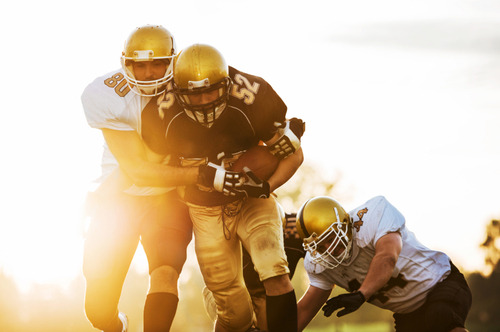One hundred million Americans are expected to watch the Super Bowl this Sunday, and one key player we are interested in watching is Seattle’s Skittles-fueled running back, Marshawn Lynch. In ESPN’s Sport Science, John Brenkus and colleagues tested Lynch’s glucose levels, reaction time, and strength before and after ingesting candy. Any scientific researcher knows that this overly simplistic test construction and small sample size is insufficient for publication, but we hope more teams will start following this model of experimentation. After all, internal experimentation drives innovation in sport forward, which we have seen firsthand with Super Bowl athletes.
An athlete’s resting glucose level is an under-appreciated biomarker, but it can reveal a lot about what’s going on inside an athlete’s body when tested repeatedly over the course of a season and throughout a career. For instance, we know from years of testing some of our best clients that a fasting glucose result above their optimized zone can indicate a problem complying with their nutrition program. A single test can’t reveal everything, but successive tests force athletes to see the effects of their behavior. Athletes may worry about developing diabetes in the future, but they are much more concerned about their energy levels during practice. Having great insulin sensitivity and a lean body cannot be overlooked, since we see athletes that make improvements in controlling their blood sugar to be the most alert and sharp when it matters, including the Winter Olympics.
Suggesting that eating sugary candy is a secret weapon or going sugar free is the path to excellence in sport is not accurate and is grossly oversimplified. Recently, nutrient timing has come under some scrutiny, with different sides showing the limits to liquid carbohydrate and protein consumption and the window of administration. What we do know is that we need to think about the other hours during the day that improve our bodies’ ability to handle glucose, such as the optimal mindset during the day to handle stress and the right sleeping environment to take advantage of our biochemistry. When coaches send us data from Heart Rate Variability (HRV) monitors like ithlete and Omegawave, we carefully look at sleep quality to ensure both energy and recovery are quantified with glucose levels and a player’s androgen scores (anabolic hormone metrics). The result? Those athletes who focus on superb sleep have the best recovery biomarkers.
Almost unlimited “metabolic mash-ups” exist when data converges with blood testing if athletes time their testing during key periods, something we share with our partnered clients. During the last two years we have made real discoveries on how all of the new technologies can expand their value when the right biomarkers are tested, and we expect more innovation to come in 2014.
Try Our Free Demo